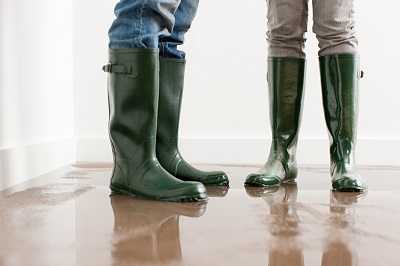
How Damaging are Floods?
Floods are the most common natural disaster in America and their effects can be devastating. While very high floodwaters obviously do the most damage, most people aren’t aware that even a few inches of water can lead to extreme home damage.
Structural Damage 
Different forces come to play during a flood that can negatively impact the structure of your home. Waves and heavy rainfall can create impact, but impact isn’t the sole source of damage. If your home remains waterlogged after outside conditions improve, the outward impact on your home’s walls could crack or collapse them. A similar effect occurs when water is pumped out of your home while the surrounding soil is still saturated, creating inward impact. This type of pressure is known as a hydrostatic load.
A hydrodynamic load occurs when water flows against and around your home, creating pressure and inundating your home with soil and silt that can weaken the foundation. In extreme cases, this can cause your home to float right off the foundation. More often, you’ll notice cracked walls or sagging ceilings. At times, these repairs become so costly that tearing down the house is more cost-effective than trying to fix everything that was damaged.
Contamination
Apart from damages that require repairs, floods necessitate a lot of cleaning up as well. Floodwaters carry waste, mud, chemicals, sewage and anything else picked up along the way. That means that everything touched by floodwaters will need to be sanitized for you and your family’s safety. Use soap and water or a bleach solution to scrub down hard flooring, walls, hard furniture, countertops and all salvageable belongings. However, carpeting, upholstered furniture, bedding, clothing and other soft items that are soaked in floodwater may need to be thrown out. This, in itself, can cost thousands in replacement items, rivaling the cost of repairing structural damage.
Categories: Sin categorizar
Tags: flood insurance
